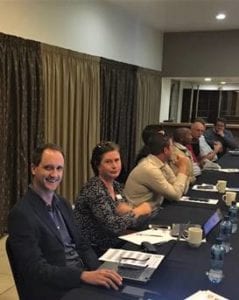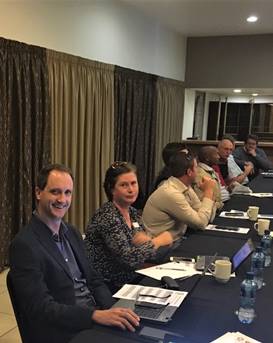Breaking down the risk-based approach
Marius van Zyl, technical director at Jones & Wagener, explained the new risk-based approach which makes use of the source-pathway-receptor concept. “The model starts with the source: where the pollution comes from,” van Zyl said. “This can be anything from vehicle exhaust emissions to drums that leak oil.” The pathway was explained as the term given to “the medium by which the pollution will travel through the environment, such as air, land or water”, and the receptor was who or what could be affected by the pollution emanating from the source.James Lake, principle scientist at SRK Consulting presented on the planning and management of residue stockpiles and residue deposits. He said the proposed amendments require one to determine the leakage rates through barrier systems, but acceptable leakage rates were not specified.
“Once the leakage rate is known, one needs to establish how the environment will be impacted as this will differ from site to site,” he said. Also from Jones & Wagener was Riva Nortje, associate in waste and tailings. She spoke about how to estimate leakage rates through pollution control barrier systems. She highlighted how leakage rates can be increased by orders of magnitude through uninformed design and specification, poor construction quality control, and operational issues. Several points that she stressed were the importance of getting a competent, experienced specialist to determine reasonable leakage rates. Another point was to ensure that the assumptions made in determining such leakage rates are achieved in the design, construction, operation and rehabilitation stages. Dr Heidi Snyman, technical director from Golder Associates spoke about source pathway receptor modelling and James Lake from SRK spoke about the regulations that govern planning and management of residue stockpiles and deposits. Also attending the workshop was Albert van Zyl, owner at Terrasim Earth Technologies who discussed unsaturated flow modelling and soil covers for stockpiles. “The workshop proved to be a great opportunity to gather waste management experts to discuss the implications of the regulations on the mining industry, which makes up over 80% of the waste generated in South Africa per year,” Shamrock said. “We will continue to facilitate learning opportunities like this workshop to grapple with amendments to waste management legislation.”







